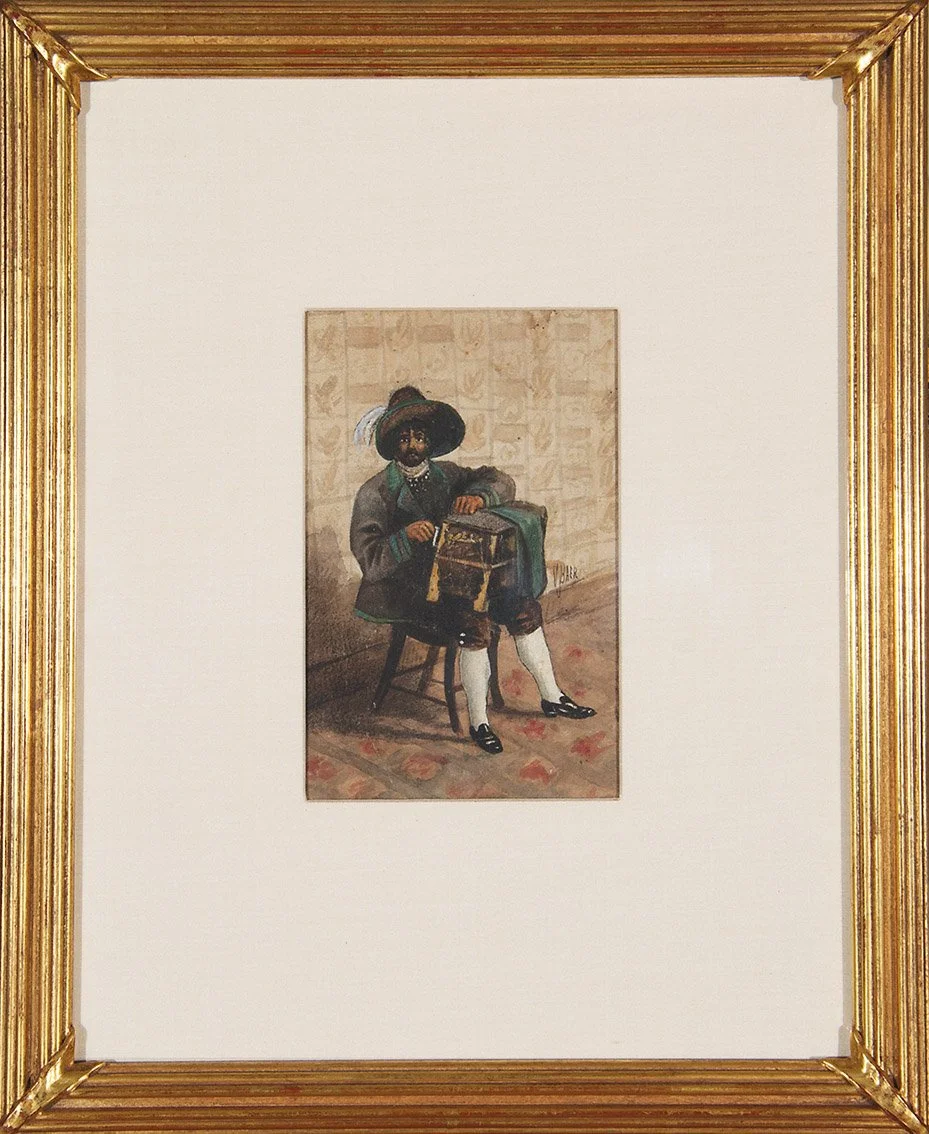William Jacob Baer
William Jacob Baer
Organ Grinder
Watercolor
7 x 4 1/2 inches
15 3/4 x 12 3/4 inches in the frame
Signed Right Middle
ID: DH4438
William Jacob Baer, considered the foremost American miniature painter, was born in Cincinnati, Ohio January 29,1860 and died in New York City in 1941. Baer began his formal training as a painter and illustrator at the Munich Royal Academy in 1880. While a student at the Academy, he was awarded four medals, and one of his works was purchased by the Directors, for the Academy.
Upon his return to the United States, Baer settled into the Montclair, New Jersey art colony to continue his career as a genre, portrait painter and teacher. He was attracted there by his friend, Alexander Drake, the art editor of Scribners Monthly. Drake encouraged him to teach a class in engraving and black-and-white draftsmanship for illustrators; class members were dubbed the Carbonari.
In 1888, Baer became the instructor at Round Lake, New York, for summer classes at a Chautauqua-like cultural enterprise to which he remained attached until 1891; in 1893 he took over the classes at Chautauqua itself for several years.
In 1892 and 93, he turned from figure painting to miniatures (both portraits and other subjects), initially under the patronage of Alfred Corning Clark, and soon Baer not only became the most renowned miniaturist in the country but also spearheaded the miniature-painting revival that began at that time. Baer exhibited in Chicago's 1893 Worlds Colombian Exposition.
In New York and at the Paris Exposition of 1897, Baer was awarded a 1st class medal. He also was a regular exhibitor at the National Academy of Design, N.Y., the Chicago Art Institute and the Pennsylvania Academy of Fine Art
